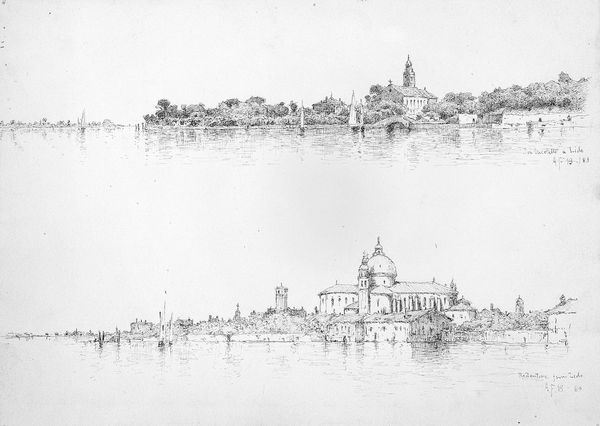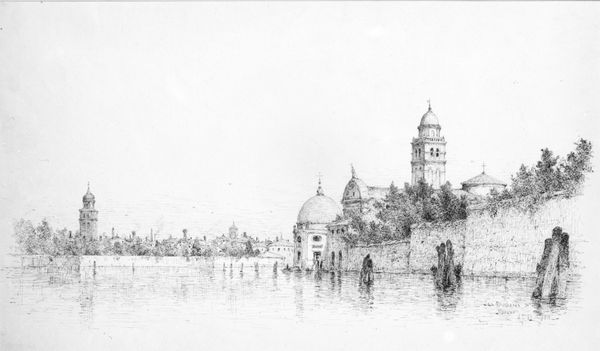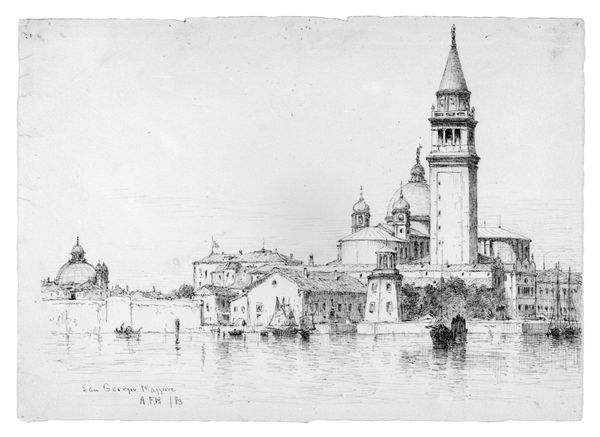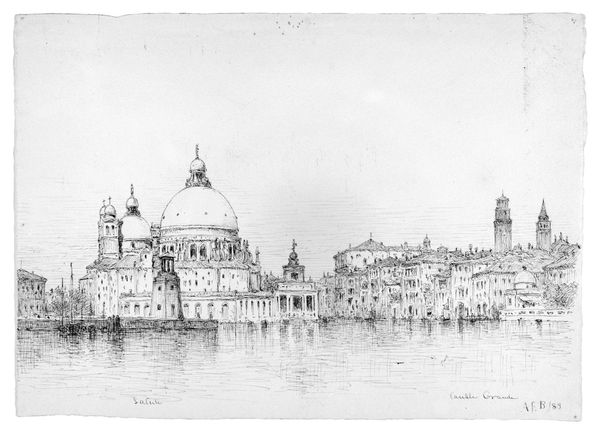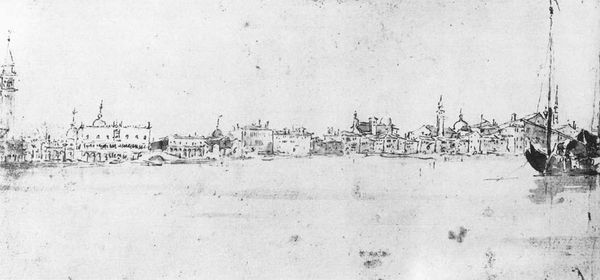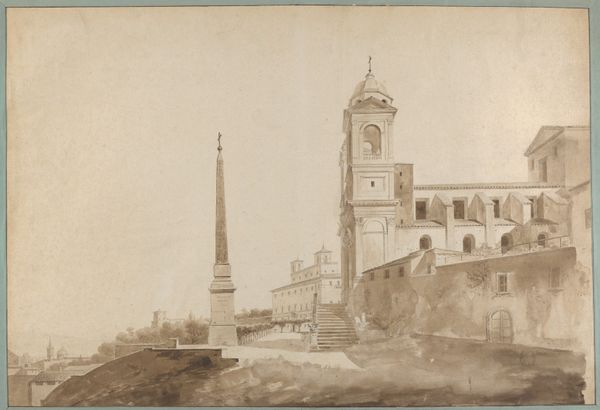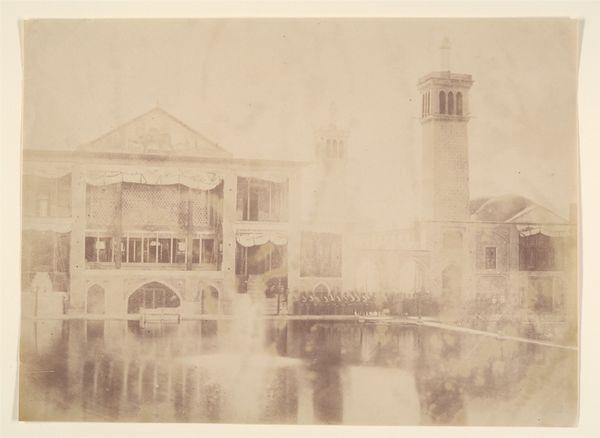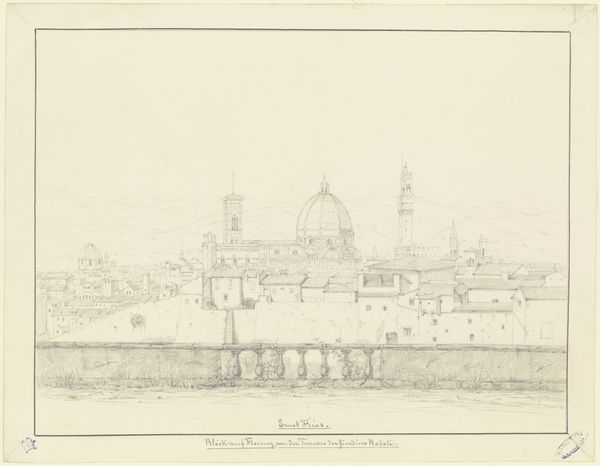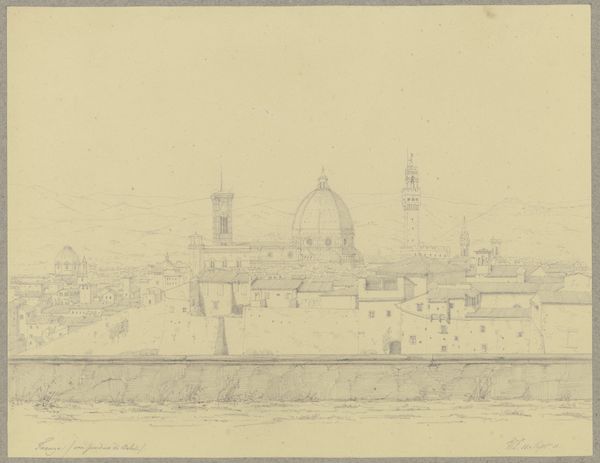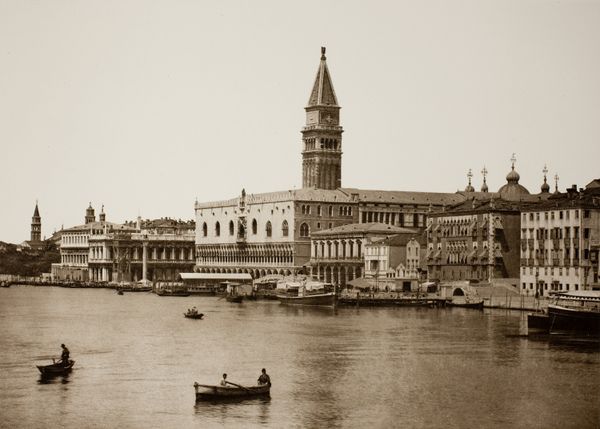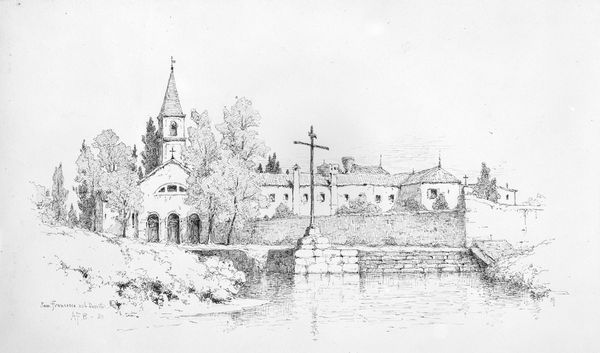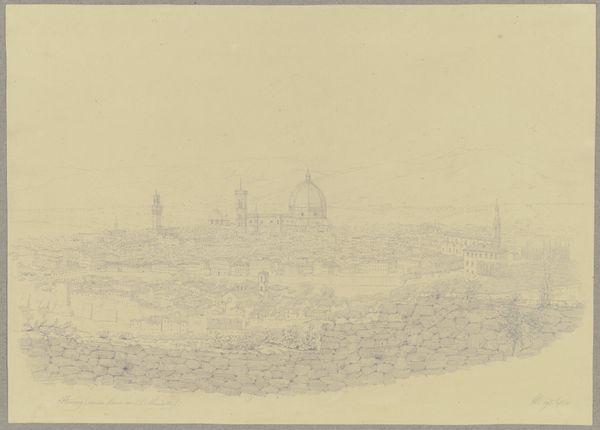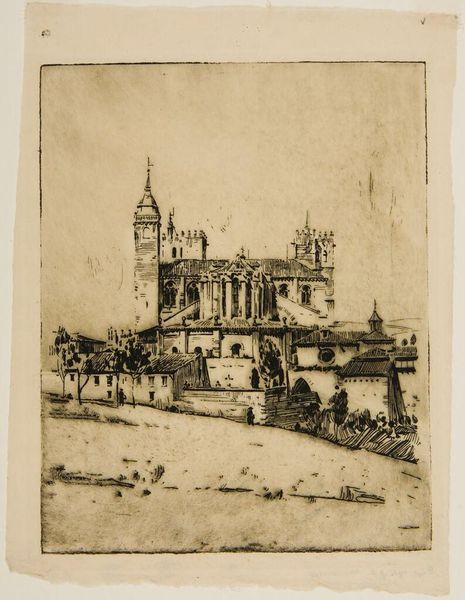
drawing, pencil
#
drawing
#
landscape
#
form
#
pencil
#
line
#
architecture drawing
#
cityscape
#
realism
Dimensions: 11 7/8 x 19 1/4 in. (30.2 x 48.9 cm)
Copyright: Public Domain
Editor: This is "San Michaeli, Venice," a pencil drawing created in 1883 by Andrew Fisher Bunner. It's currently at the Metropolitan Museum of Art. I'm struck by how calm it feels; the buildings almost seem to float above the water. How do you interpret this work? Curator: Well, considering the historical context, this drawing reflects the burgeoning interest in Venice among American artists in the late 19th century. Think of figures like Whistler and Sargent; they were drawn to the city, seeking inspiration in its unique atmosphere and architectural beauty. What do you notice about Bunner's specific choice of San Michele? Editor: I see what looks like a walled cemetery island, very different than Piazza San Marco or other typical views of Venice. Was San Michele particularly significant at the time? Curator: Precisely! By focusing on the cemetery island, Bunner steers clear of the increasingly commodified images of Venice. This was a conscious decision by many artists to seek out more "authentic" or untouched locales. Think about it – a cemetery juxtaposes life and death. In the rapidly industrializing world, did this location hold particular significance? Editor: I see your point. Maybe it’s about capturing something timeless, a reflection on mortality that contrasts with the fleeting nature of modern life? I didn't see that before. Curator: Exactly. It is in quiet corners like these that they found meaning, offering a visual commentary on the socio-political landscape. Editor: That’s fascinating. It's more than just a pretty cityscape; it's a statement. Curator: Indeed. Seeing art as a part of this evolving discourse gives one an insight to our public role.
Comments
No comments
Be the first to comment and join the conversation on the ultimate creative platform.
